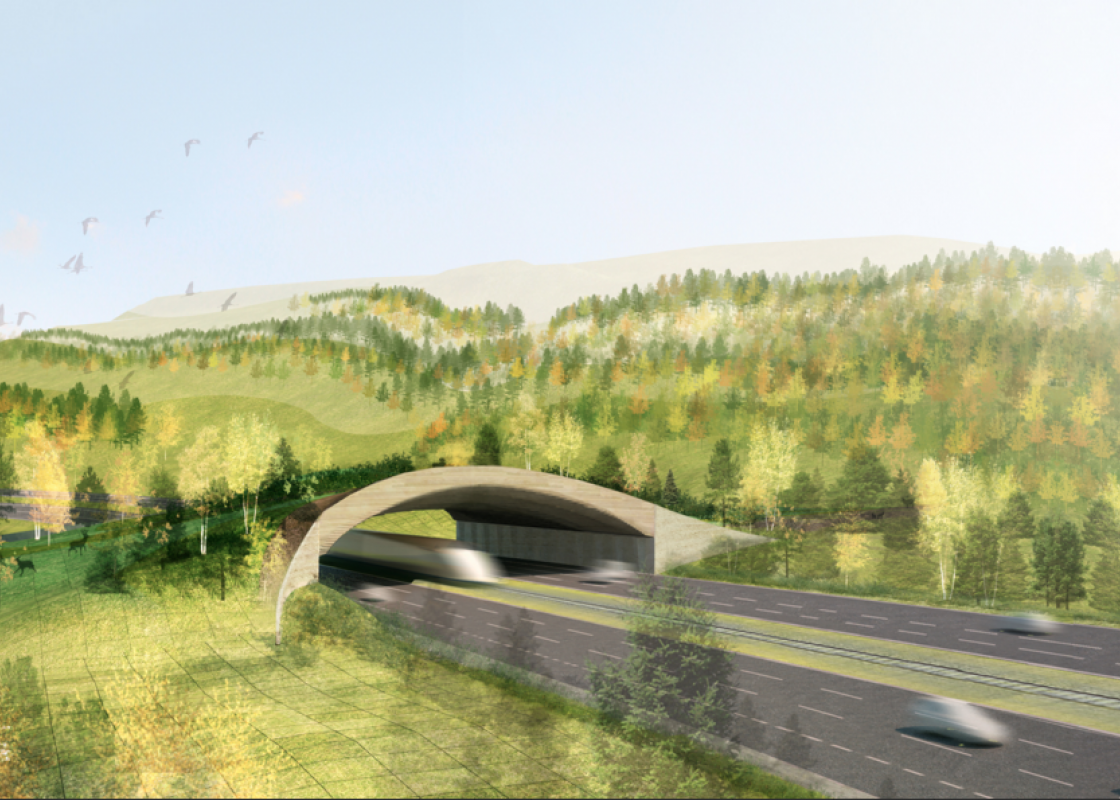This is a response to the third lecture in the RSA/RDA Spring 2016 Lecture Series, Projective Infrastructures. To view excerpts from the lectures, click to RDA's Vimeo page. To read OffCite's other coverage of the lectures, including an essay about another Balmori project, GrowOnUs, use the tag Projective Infrastructures.
Diana Balmori of Balmori Associates presented in a humble manner on major projects that speak to the core principles of permaculture, but she never called her work by that name. Permaculture is a design-focused discipline that seeks to leverage the deeply resilience systems of nature to meet human needs. Patterns observed in nature are applied to agricultural and cultural contexts. An example of agricultural permaculture are swales, which capture water running down a slope in a "ditch" and slowly release the water to plants lower down the slope. A local example is Finca Tres Robles on Navigation, which uses a city waste product, tree mulch, to grow hundreds of pounds of produce per week. An example of social permaculture is Ecoescuela El Manzano, which is a 1,200 acre community embracing village culture in Chile.
Balmori's design for the U.S. Department of Transportation introduces a large land bridge over a freeway to connect wildlife areas. After discovering that blue pine were devastated in the Rockies by pine beetles, she found a way to turn that tragedy into a productive way to pay it forward to nature. Her firm met with a structural engineer who helped them determine that the blue pine could support the massive weight of soil and trees over the freeway. A shining example of permaculture principles.
Watch a clip from Diana Balmori's lecture in which she discusses a proposed land bridge.
Balmori also designed a project for Sejong, South Korea, for a new government city. With too much pressure on the infrastructure in Sejong, 36 ministries were forced to move to a new location, and a new city wasa built around it. Balmori won the work with a design that linked all the proposed government buildings with a four-kilometer rooftop greenway. The design also included zero waste principles for the development, which was not adopted, but the expansive green roof was built. One of the core principles of permaculture is to design systems that produce no waste, as nature does not have a concept of waste.
The work of Balmori Associates is a fine example that there are many disciplines working toward the common good of all. They come by many names and implementations, but they are all pushing back the blind growth of private and public space. Incorporating nature and open space and considering the full development of life (including waste) are values that can bring many disciplines back into balance.
Speaking with Balmori after the lecture I was surprised that she has done only limited research in the realm of permaculture (as she does it so well) and not surprised (as permaculture doesn't have a broad audience). How incredible that her firm's work embodies these principles without the influence of permaculture. It shows that the name does not matter, but the principles indeed point to longstanding truths. The indigenous who lived on this land before industrialization embody these principles, Balmori embodies these principles, and many around the world continue to live by them by many different names.
To stay in touch with permaculture happening in Houston, sign up for this newsletter.










